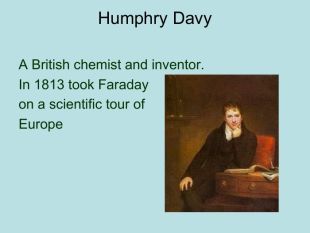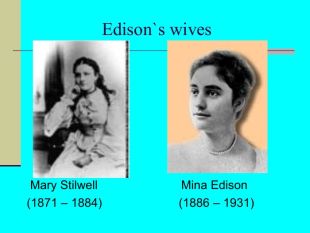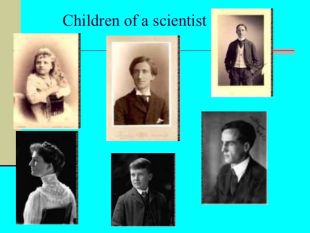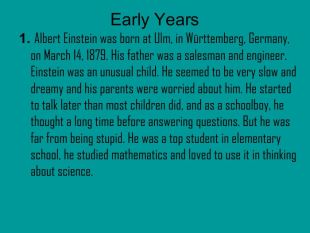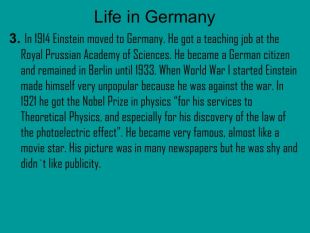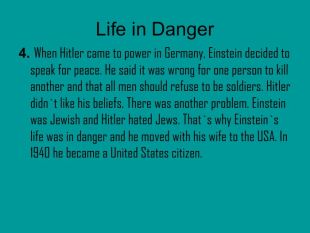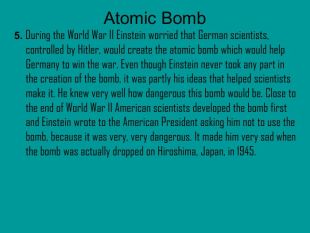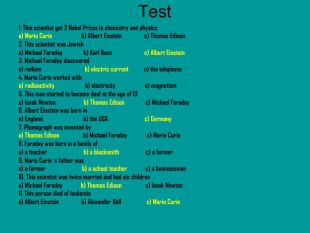Урок англ. мови у 9 класі "Science and Inventions “Scientists and their Contributions to the World Science”
- Lesson.doc doc
- Present.ppt ppt
Topic: Science and Inventions “Scientists and their Contributions to the World Science”
Practical aim: 1. To develop students` pair and group communicative skills in an activity which resembles a real speech situation.
2. To develop extensive listening to a text and ability to express their own point of view.
3. To develop imagination and logical thinking.
Educational aim: To encourage pupils to study well in order to get good knowledge and to become useful to society people.
Cultural aim: To enlarge knowledge about world of science, modern technologies and inventions.
Equipment:
- Proverb on a board
- Text books
- Card with words for a test
- Multimedia board
- Projector
- Cards with tests
Lesson structure:
- Warming up activity – 5 minutes
- Communicative practice – 37 minutes
- Speaking (T – Ps) – 2 minutes
- Pre-listening activity – 3 minutes
- Listening comprehension – 3 minutes
- Post-listening activity – 5 minutes
- Differentiating task – 15 minutes
- Test – 4 minutes
- Writing – 5 minutes
3. Lesson summary – 1 minute
- Homework – 2 minutes
Procedure
- Warming-up activity
Teacher: Hello, friends! Glad to see you in a good mood and full of energy today. I hope nothing has changed to the worse since we last met, am I right? How do you do, K.?
K: I am OK and ready to work.
N.: I am full of ideas and feel just great.
M.: Never felt better, thank you.
Teacher: Glad to hear that. The more so because I am going to give you some food for thought. As at the previous lessons we spoke about science and how it is important in our life, I think it won`t be difficult for you to understand and explain the meaning of the following words which were once said by a famous writer B.Shaw “The reasonable man adapts himself to the world; the unreasonable one persists in trying to adapt the world to himself. Therefore all progress depends on the unreasonable man.” (slide 1)
the reasonable – розсудливий
(some pupils explain how they understand the meaning of the words)
Teacher: Right you are, I see you understand the meaning of the quotation quite well, a genius must be in some way unreasonable and try his best to make life easier, to adapt it to himself at any rate. There were many unreasonable men in the history of science and nowadays we can live happy and without less troubles due to them and their inventions. As you`ve understood the topic of our today`s lesson is “Scientists and Inventions”, (slide 2) we`ll speak about the most famous world scientists in different branches of science; we`ll practice our lexical vocabulary in dialogues and short monologues and revise some grammar material. (slide 3)
2.Communicative practice
a) Speaking T-Ps
Teacher: You study many subjects at school and I am sure you already know some names of scientists in physics, biology, mathematics, chemistry and other. What scientists can you name? Maybe their portraits will help you.
(slide 4)
Michael Faraday, Charles Darwin, Ivan Pavlov, Thomas Edison, Alexander Bell, Marie Curie, Albert Einstein, Isaak Newton and other
b) Pre-listening activity
Teacher: Do you know anything about such famous scientist as Marie Curie?
(Negative answers)
Would you like to learn more about a woman scientist?
Before listening to the text pay attention to some words and word combinations which may cause you difficulties in understanding.
radioactive substances – радіоактивні речовини
uranium ore [juə`reinjəm] – уранова руда
radium and polonium – радій та полоній
share the award – розділяти нагороду
prolonged exposure – тривале піддавання
leukemia [lju:ki:`miə] – лейкемія (slide 4)
Teacher: While listening to the text try to find answers on such questions:
When and in what family was Marie born?
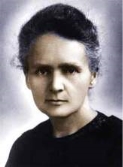 Where did she meet her future husband and who was he?
Where did she meet her future husband and who was he?
What was the object of the Curies researches?
Why did they face difficulties with early researches?
How many Nobel Prizes and for what did Marie Curie win?
How did her husband die?
What was the reason of her death? (slide 5)
c) Listening activity
Text
Marie Curie, née Maria Sklodowska, was born in Warsaw on November 7, 1867, in the family of a secondary-school teacher. She received a general education in local schools and some scientific training from her father. Her family valued education. In 1891, she went to Paris to study mathematics, chemistry and physics at the Sorbonne and was the first woman to teach there. She met Pierre Curie, Professor of Physics in 1894 and in the following year they were married. Her early researches, together with her husband, were often performed under difficult conditions, laboratory arrangements were poor and both had to undertake much teaching to earn a livelihood. They conducted research on radioactive substances. They found that the uranium ore contained much more radioactivity than could be explained by the uranium content.
The Curie’s began a search for the source of the radioactivity and discovered two highly radioactive elements, “radium” and “polonium.” The Curie's won in 1903 the Nobel prize for physics for their discovery. They shared the award with another French physicist, Antoine Henri Bacquerel, who had discovered natural radioactivity. In 1906 Pierre, overworked and weakened by his prolonged exposure to radiation, died when he was run over by a horse drawn wagon.
Madame Curie continued her work on radioactive elements and won in 1911 the Nobel prize for chemistry for isolating radium and studying its chemical properties. In 1914 she helped found the Radium Institute in Paris, and was the Institute's first director.
On July 4, 1934, at the age of 67 Madame Curie died of leukemia. After her death the Radium Institute was renamed the Curie Institute in her honor.
d) Post-listening activity
Teacher: I think you understand the information of the biographical text about Marie Curie and let`s check how well you`ve caught the meaning of it while answering the questions.
When and in what family was Marie born?
Marie Curie was born on the 7th of November 1867 in a family of a school teacher.
Where did she meet her future husband and who was he?
When she went to study in Sorbonne in Paris she met her future husband Pierre Curie who was a Professor of Physics.
What was the object of the Curies researches?
The Curies conducted research on radioactive substances.
Why did they face difficulties with early researches?
They faced difficult conditions as the laboratory equipment was too old and poor and they both had to work hard to earn for living.
How many Nobel Prizes and for what did Marie Curie win?
The scientist won two Nobel prizes: one for discovery in physics and another one – for chemistry.
How did her husband die?
Pierre was weakened by his prolonged exposure to radiation and died when he was run over by a wagon drawn by a horse.
What was the reason of her death?
In 1934 at the age of 67 Marie died of leukemia.
Teacher: Well done, dear! You`ve caught the meaning of the text perfectly well.
e) Differentiating task
Teacher: Many scientists tried to create a time-machine but they all failed. Let`s imagine that this wonderful machine which can help to see past and future really exists. I suggest you traveling in time and we`ll make our way to the past in order to see with our own eyes and to talk to some famous and outstanding scientists who made a great contribution to the development of world science.
Let`s start our time-machine. So we are in the past and you all will receive tasks for your recearches in envelopes. (slide 7)
Group 1
(two pupils receive clothes for Faraday and an envelope with task, one pupil prepared the information about Faraday at home)
Your task is to make up a dialogue between Michael Faraday and a curious pupil from the future who needs to learn more information about the life and work of the great scientist.
Group 2
(Three pupils receive a manuscript and an envelope with the task)
You were lucky to find a manuscript about Thomas Edison`s life. Work on it and then represent the information in three parts to your classmates: 1. Date of birth and education; 2. early years and family; 3 inventions and date of death)
Group 3 and 4
(3 pupils in each group receive texts on papers and envelopes with the task)
You came across the interesting information about Albert Einstein but each of you can read only one piece of a whole text. Read it and try to choose the correct title for your paragraph, explain your choice)
Teacher: You`ve got your task and you have 4 minutes to get ready to it.
f) Presentation of tasks
Teacher: I see you are ready. Let`s come back to our time and see what you`ve found out. Listen to the dialogue of a curious pupil Kate with M.Faraday and try to memorize the main facts.
(Presentation of a dialogue using the slides 8-11)
Teacher: Pupils presented the information very substantial and you had a perfect opportunity to learn about Faraday`s life and work. What can you tell about his date of birth and family?
Faraday was born on September 11, 1791 in a small village near London. His father was a poor blacksmith and mother was a daughter of a farmer.
Did he get a good education?
His family couldn`t afford a good education, so he attended a day school and lectures by famous scientist of those times Humphry Davy.
Where did he meet many men of science?
Humphry took Faraday on a scientific tour of Europe as his assistant where Faraday met Ampere, Volta and other great scientists who influenced his future inventions.
And at last what was his the main invention?
The most important of his discoveries was the generation of electricity from magnetism. So electric current was discovered.
Teacher: Thank you Helen and Kate, your dialogue was informative and interesting and you role-played it realistic and naturally. You receive…… marks for this task.
Now I invite here our three young researches, who were in the archive and worked with manuscript about Thomas Edison`s life and work, they will tell us what they`ve learnt.
(Pupils tell in turns about Edison using the manuscript and it accompanies by slides 12-18)
Additional information: Teachers said that Edison was stupid as his mind often wandered at school and mother taught him at home; at the age of 13 when he was trying to catch a train a man pulled him up onto the train by his ears; at the age of 15 Thomas saved a 3year-old boy from a runaway train and his father made him a telegraph operator; he had 4 children (2 boys and 2 girls) with Mary Stilwell and 2 boys with Mina Miller; Mary died of typhoid.
|
Born |
February 11, 1847, Milan, Ohio |
|
Parents |
Samuel Ogden Edison, Jr. (1804–1896), Nancy Matthews Elliott (1810–1871) |
|
Education |
Was homeschooled by mother |
|
Occupation |
|
|
Early years |
(1859) sold candy at trains, (1860) started to become deaf, (1862) became a telegraph operator |
|
Inventions |
a long-lasting, practical electric light bulb (1879), the motion picture camera (1891) |
|
Spouse(s) |
Mary Stilwell (m. 1871–1884) died of typhoid; Mina Edison (m. 1886–1931) |
|
Children |
Marion Estelle Edison (1873–1965); Thomas Alva Edison Jr. (1876–1935); William Leslie Edison (1878–1937); Madeleine Edison (1888–1979); Charles Edison (1890–1969); Theodore Miller Edison (1898–1992) |
|
Died |
October 18, 1931 (aged 84) died of complications of diabetes |
|
Signature |
|
Teacher: Thank you, boys, for your work. (Teacher gives marks for the task)
Teacher: And at last it`s time to find out about a great genius Albert Einstein. The text you`ve read was divided into paragraphs with numbers. You had to choose an appropriate title and explain your choise.
(Pupils choose the titles and explain their choice, slides 19-25)
g) Written task
Teacher: Now let`s have a little written practice. Open your books, please, on page 90. Look at the exercise 19. read the instruction and do it.
h) Test
Teacher: To sum up what you`ve learnt today at the lesson I suggest you writing a short test which will show how attentive you were at the lesson. (slide 26)
1. This scientist got 2 Nobel Prizes in chemistry and physics.
a) Marie Curie b) Albert Einstein c) Thomas Edison
2. This scientist was Jewish
a) Michael Faraday b) Karl Benz c) Albert Einstein
3. Michael Faraday discovered
a) radium b) electric current c) the telephone
4. Marie Curie worked with
a) radioactivity b) electricity c) magnetism
5. This man started to become deaf at the age of 13
a) Isaak Newton b) Thomas Edison c) Michael Faraday
6. Albert Einstein was born in
a) England b) the USA c) Germany
7. Phonograph was invented by
a) Thomas Edison b) Michael Faraday c) Marie Curie
8. Faraday was born in a family of
a) a teacher b) a blacksmith c) a farmer
9. Marie Curie`s farther was
a) a farmer b) a school teacher c) a businessman
10.This scientist was twice married and had 6 children
a) M.Faraday b) Th.Edison c) Isaak Newton
11. This scientist died of leukemia
a) Albert Einstein b) Alexander Bell c) Marie Curie
Teacher: Now exchange your works and check them using the slide with the correct answers. (slide 27)
3.Lesson summary
Teacher: Thank you for your active work today, I hope you`ve enjoyed the lesson (teacher announces the marks for the lesson)
4.Homework
Teacher: At home you are going to work with the text about Acadenician Korolov in exercise 14, page 88 and get ready to speak about the scientist using the expressions from the exercise 15, page 89 (slide 28)
radioactive substances – радіоактивні речовини
uranium ore [juə`reinjəm] – уранова руда
radium and polonium – радій та полоній
share the award – розділяти нагороду
prolonged exposure – тривале піддавання
leukemia [lju:ki:`miə] – лейкемія
Marie Curie, née Maria Sklodowska, was born in Warsaw on November 7, 1867, in the family of a secondary-school teacher. She received a general education in local schools and some scientific training from her father. Her family valued education. In 1891, she went to Paris to study mathematics, chemistry and physics at the Sorbonne and was the first woman to teach there. She met Pierre Curie, Professor of Physics in 1894 and in the following year they were married. Her early researches, together with her husband, were often performed under difficult conditions, laboratory arrangements were poor and both had to undertake much teaching to earn a livelihood. They conducted research on radioactive substances. They found that the uranium ore contained much more radioactivity than could be explained by the uranium content.
The Curie’s began a search for the source of the radioactivity and discovered two highly radioactive elements, “radium” and “polonium.” The Curie's won in 1903 the Nobel prize for physics for their discovery. They shared the award with another French physicist, Antoine Henri Bacquerel, who had discovered natural radioactivity. In 1906 Pierre, overworked and weakened by his prolonged exposure to radiation, died when he was run over by a horse drawn wagon.
Madame Curie continued her work on radioactive elements and won in 1911 the Nobel prize for chemistry for isolating radium and studying its chemical properties. In 1914 she helped found the Radium Institute in Paris, and was the Institute's first director.
On July 4, 1934, at the age of 67 Madame Curie died of leukemia. After her death the Radium Institute was renamed the Curie Institute in her honor.
Test
1. This scientist got 2 Nobel Prizes in chemistry and physics.
a) Marie Curie b) Albert Einstein c) Thomas Edison
2. This scientist was Jewish
a) Michael Faraday b) Karl Benz c) Albert Einstein
3. Michael Faraday discovered
a) radium b) electric current c) the telephone
4. Marie Curie worked with
a) radioactivity b) electricity c) magnetism
5. This man started to become deaf at the age of 13
a) Isaak Newton b) Thomas Edison c) Michael Faraday
6. Albert Einstein was born in
a) England b) the USA c) Germany
7. Phonograph was invented by
a) Thomas Edison b) Michael Faraday c) Marie Curie
8. Faraday was born in a family of
a) a teacher b) a blacksmith c) a farmer
9. Marie Curie`s farther was
a) a farmer b) a school teacher c) a businessman
10.This scientist was twice married and had 6 children
a) M.Faraday b) Th.Edison c) Isaak Newton
11. This scientist died of leukemia
a) Albert Einstein b) Alexander Bell c) Marie Curie
|
Born |
February 11, 1847, Milan, Ohio |
|
Parents |
Samuel Ogden Edison, Jr. (1804–1896), Nancy Matthews Elliott (1810–1871) |
|
Education |
Was homeschooled by mother |
|
Occupation |
|
|
Early years |
(1859) sold candy at trains, (1860) started to become deaf, (1862) became a telegraph operator |
|
Inventions |
a long-lasting, practical electric light bulb (1879), the motion picture camera (1891) |
|
Spouse(s) |
Mary Stilwell (m. 1871–1884) died of typhoid; Mina Edison (m. 1886–1931) |
|
Children |
Marion Estelle Edison (1873–1965); Thomas Alva Edison Jr. (1876–1935); William Leslie Edison (1878–1937); Madeleine Edison (1888–1979); Charles Edison (1890–1969); Theodore Miller Edison (1898–1992) |
|
Died |
October 18, 1931 (aged 84) died of complications of diabetes |
|
Signature |
|
1. Albert Einstein was born at Ulm, in Württemberg, Germany, on March 14, 1879. His father was a salesman and engineer. Einstein was an unusual child. He seemed to be very slow and dreamy and his parents were worried about him. He started to talk later than most children did, and as a schoolboy, he thought a long time before answering questions. But he was far from being stupid. He was a top student in elementary school, he studied mathematics and loved to use it in thinking about science.
2. In 1896 Einstein entered the Swiss Federal Polytechnic School in Zurich where he was trained to be a teacher of physics and mathematics. There in Switzerland he got his first job. In his spare time he wrote out some of his original ideas on physics. In 1905 Albert published an article on his special theory of relativity. It caused a sensation among scientists. In the article he said that the basic qualities of objects (mass, length and time) changed when they moved at high speed, closer to the speed of flight.
3. In 1914 Einstein moved to Germany. He got a teaching job at the Royal Prussian Academy of Sciences. He became a German citizen and remained in Berlin until 1933. When World War I started Einstein made himself very unpopular because he was against the war. In 1921 he got the Nobel Prize in physics “for his services to Theoretical Physics, and especially for his discovery of the law of the photoelectric effect". He became very famous, almost like a movie star. His picture was in many newspapers but he was shy and didn`t like publicity.
4. When Hitler came to power in Germany, Einstein decided to speak for peace. He said it was wrong for one person to kill another and that all men should refuse to be soldiers. Hitler didn`t like his beliefs. There was another problem. Einstein was Jewish and Hitler hated Jews. That`s why Einstein`s life was in danger and he moved with his wife to the USA. In 1940 he became a United States citizen.
5. During the World War II Einstein worried that German scientists, controlled by Hitler, would create the atomic bomb which would help Germany to win the war. Even though Einstein never took any part in the creation of the bomb, it was partly his ideas that helped scientists make it. He knew very well how dangerous this bomb would be. Close to the end of World War II American scientists developed the bomb first and Einstein wrote to the American President asking him not to use the bomb, because it was very, very dangerous. It made him very sad when the bomb was actually dropped on Hiroshima, Japan, in 1945.
6. After World War II Albert Einstein continued to work both for science and for peace. If someone calls you an “Einstein”, consider it a compliment. It means that you are compared to one of the greatest minds of the twentieth century. He had the IQ of a genius. More than that Einstein was a very gentle man. He loved music, children and sailing. He is remembered as a gentle person because he believed that all nations should live without war. In 1955, he died in his sleep at the age of 76.
Titles
1. Early Years
- A Young Scientist
- Life in Germany
- Life in Danger
- Atomic Bomb
- The End of Life
Tasks for group work
|
Your task is to make up a dialogue between Michael Faraday and a curious pupil from the future who needs to learn more information about the life and work of the great scientist. |
|
|
|
You were lucky to find a manuscript about Thomas Edison`s life. Work on it and then represent the information in three parts to your classmates: 1. Date of birth and education; 2. Early years and inventions; 3. Family and date of death |
|
|
|
You came across the interesting information about Albert Einstein but each of you can read only one piece of a whole text. Read it and try to choose the correct title for your paragraph, explain your choice. Titles Early Years A Young Scientist Life in Germany |
|
|
|
You came across the interesting information about Albert Einstein but each of you can read only one piece of a whole text. Read it and try to choose the correct title for your paragraph, explain your choice. Titles Life in Danger Atomic Bomb The End of Life |
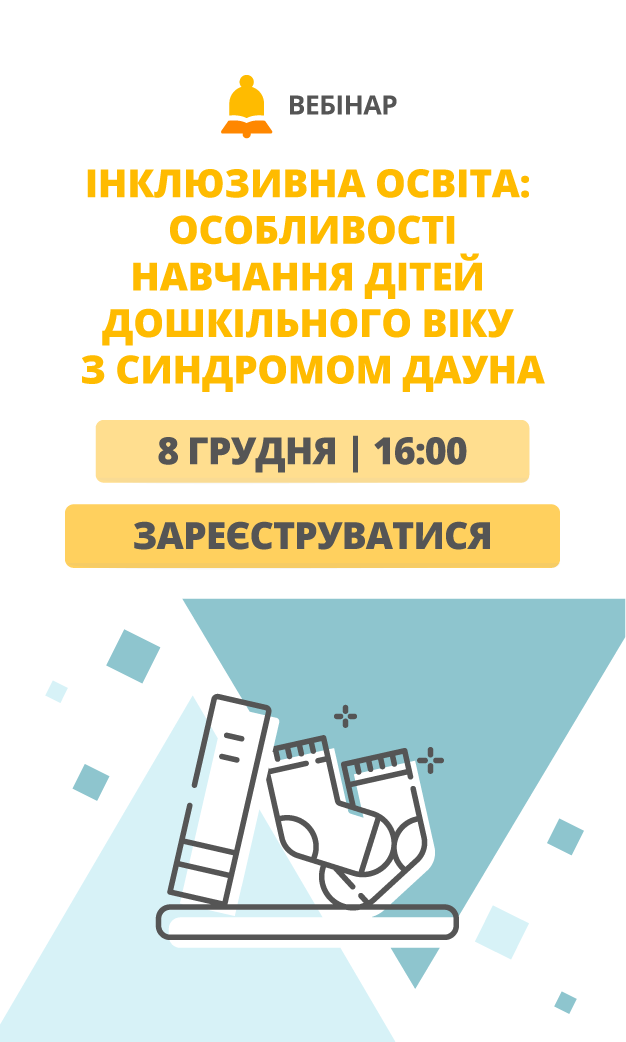

про публікацію авторської розробки
Додати розробку








![Marie Curie Antonie Henri Bacquerel radioactive substances – радіоактивні речовини uranium ore [juə`reinjəm] – уранова руда radium and polonium – радій та полоній share the award – розділяти нагороду prolonged exposure – тривале піддавання leukemia [lju:ki:`miə] – лейкемія Marie Curie Antonie Henri Bacquerel radioactive substances – радіоактивні речовини uranium ore [juə`reinjəm] – уранова руда radium and polonium – радій та полоній share the award – розділяти нагороду prolonged exposure – тривале піддавання leukemia [lju:ki:`miə] – лейкемія](/uploads/files/14691/334588/375819_images/5.jpg)































